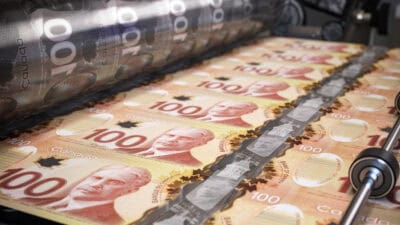How does one retire in a bearish market with high inflation? Let’s use an example. We’ll say that 60-year-old John has a $1 million portfolio in March 2023 (60% in equity and 40% in long-term debt); his portfolio has lost more than 10% value, and it is time for John to retire. The aggressive interest rate hike by the Fed has cost him $100,000, or 18 months of retirement money. And high inflation could eat up more of his portfolio. You don’t want that happening with your lifetime of investments.
Hence, it is important to plan for bear markets when planning retirement. Let’s see what John can do to save his retirement portfolio in a bear market.
Rebalancing portfolio when you retire: A double-edged sword
While rebalancing your portfolio is a good practice, it might not work well in a panic situation. The objective of rebalancing is to book profits in a bull market and diversify it across fixed-income securities, dividend stocks, and other growth opportunities.
Never have too much exposure to one stock, sector, or security. Let’s understand with an example.
John invested 10% of his portfolio ($100,000) in oil and gas stocks at the end of 2021. Suddenly, oil stocks soared. His $100,000 became $160,000 in May 2022, increasing his portfolio’s exposure to oil stocks to 16%. John sticks to his original allocation (10% in the oil sector) and cashes out the $60,000 profit to put in other stocks. Whenever his oil stocks breach the 15% portfolio exposure, he can rebalance it to 10%. This way, John can make the most of the bull market without panicking in a bear market.
If you are comfortable with your sector allocation, stick to it. However, now is not a good time to buy oil stocks. A recession could reduce oil demand and stabilize the oil price, which pushed inflation to a 40-year high in mid-2022. If you are planning to rebalance your portfolio, avoid selling bank and oil stocks at a loss.
Building a cash reserve for a bearish market
The U.S. banking crisis showed what panic could do to a bank that invested heavily in long-term Treasury bills. The panic withdrawals by customers forced the Silicon Valley Bank to sell long-term T-bills at a loss. If SVB could hold these securities until maturity, it would have made a profit instead of a loss.
When you sell fundamentally strong stocks in a bearish market in panic, you realize the losses, which would otherwise be unrealized had you held on to them.
If you go by Warren Buffett’s methods, invest 10% of your portfolio in diversified short-term bonds, which have guaranteed returns. For instance, John can invest $100,000 in short-term bonds and fixed deposits from the Big Six Canadian banks, giving him the cash reserve he needs to pay for his retirement in a bearish market. The Canada Deposit Insurance Corporation insures up to $100,000 deposits in these banks.
Stocks to hold in the current bearish market
Canada’s integrated oil company Suncor Energy (TSX:SU) is not a stock to sell in a panic. It has slipped 15% after the banking crisis created a bear momentum. The stock is not a buy at this dip, as the oil price is at the last of its peak season before the world transitions to green energy. But it is also not a stock to sell at $40.74. The stock could remain volatile for some time, with a possibility of another 10% upside to $45. That is a good time to exit the stock and book in profits.
One stock to buy before you retire
You can buy good dividend stocks like BCE (TSX:BCE). The telecom giant has lower leverage and weighted average interest on its loans. It grew its dividend at an average annual rate of 5% for over 10 years. If John invests 5% of his portfolio ($50,000), he can buy 820 shares of BCE and get an annual passive income of $3,170. If the stock continues to grow dividends by 5%, John’s passive income could grow along with inflation.
Whether you retire or not, keep your portfolio diversified across stocks, deposits, ETFs, and different registered savings accounts at all times.








